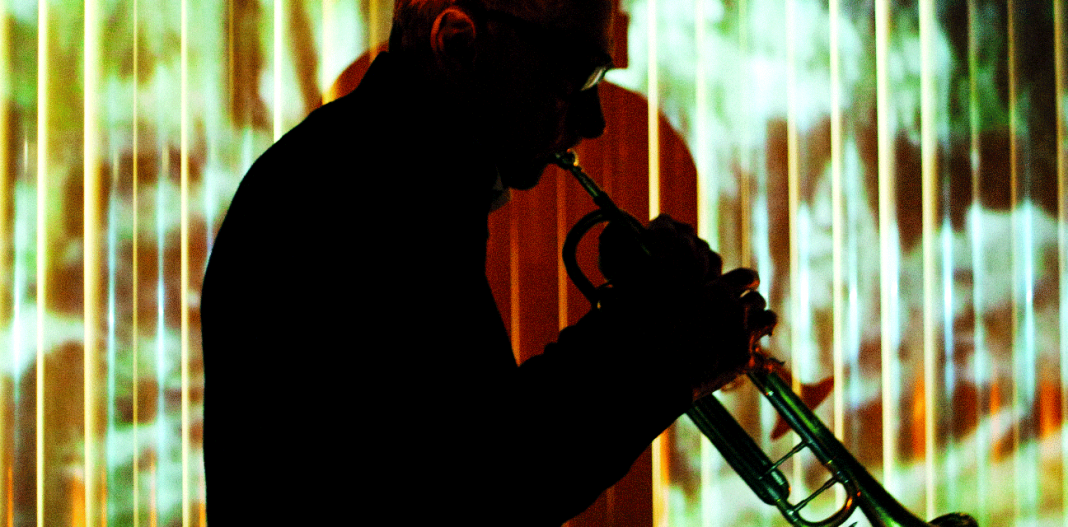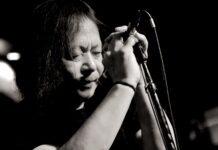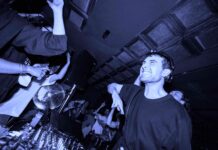More recently, Hassell’s name and the term “Fourth World” have been popping up with increasing frequency in some of the more forward-thinking quarters of electronic music. The Fourth World attribute has been attached to Don’t DJ, whose kaleidoscopic tracks blur the lines between synths, drum machines and gamelan orchestras. Montreal’s RAMZi has cited Hassell as an influence on her own music, which seems to similarly exist in a distinct space-time of its own. Adventurous DJs such as Glasgow’s Optimo crew and Salon des Amateurs resident Jan Schulte have put together compilations of Fourth World-inspired tracks from across four decades. And in the past few years labels including Music From Memory, Soave, Séance Center and RVNG Intl. sister outlet Freedom To Spend have reissued or compiled music by the likes of Michael Turtle, Roberto Musci, Michel Banabila, and Richard Horowitz, whose Hassell-inspired works now sound perhaps even more current than at the time of its original release.
2018 then seems to be auspicious moment for Jon Hassell to release a new album. Listening To Pictures (Pentimento Volume One) is his first collection of new music for nine years and represents an updated reconfiguration of all the signature elements of Hassell’s magical realists soundworld: the lush chords and fine-grained textures, the oddly intricate rhythm structures that propel forward while revolving around their own axis, and of course, the treated trumpet lines, sounding somewhere between an intimate whisper and a chorus of conch shells.
We talked to Jon Hassell, now residing in Los Angeles, about musical roots, listening vertically, the rhythm of falling leaves and some of the other concepts that have informed his work over a lifetime of exploration and study with and among some of the most significant figures of 20th century music.
Have you been working on this new album continually since the release of the last one, or was there a break in between?
Actually it’s like… imagine a slow motion movie of a plant growing. Little shards of this and little pieces of that go into concerts and then in the studio and gradually getting pulled together. It’s a bit like the pentimento idea of layers showing through other layers. And each of those layers might be quite distant. Like if you think about Natalie Cole singing duets with her father [Nat King Cole], the time displacement is 20, 30, 40 years, so it’s that kind of idea. I have such a collection of layers so just about anything I do is going to be a combination of older and newer. That’s one of the ways in which that pentimento idea applies to this record.
It’s also visually represented on the cover with the layers of Mati Klarwein’s artwork. Along with Miles Davis, Herbie Hancock and many others, you’ve used a few of his paintings for your album covers. Was he a close friend of yours?
Yeah, he died a few years ago. We met in New York a long time ago and eventually we got closer. Later on I spent a lot of time in Deià, which is in Mallorca, where Mati lived and where the name of my label [Ndeya] comes from. I spent some of my best times there, in his place and this record is a tribute to Mati. And on the inner sleeves of the LP I did these visual pentimentos, which you could say is really a collage of things that were combined from my experience and from Mati himself painting something on canvas when I was there.
Stream: Karlheinz Stockhausen – Gesang der Jünglinge
One thing I wanted to hear from you about is your history and evolution as a sampling artist. What were your first kind of encounters with using pre-existing sounds as part of your compositional process?
Let’s see…
Did it have anything to do with Stockhausen by any chance?
Speaking generally, yes. I mean I spent two years in Cologne with Karlheinz Stockhausen. But sampling wasn’t in the “Wörterbuch” [“dictionary”] yet at that time. I think it’s just more of a love and attraction to the idea of collage. But, it’s not like the idea of collage means that what you arrive at is a collage. Just by searching for the thing that’s appealing, the idea to have in mind is: What is it that I really like? I mean that’s the question that I think every musician and artists and everybody actually, is asking themselves; what they really like. And that means the emphasis is on really like, meaning how do you push aside what you’ve been told, what you’ve been taught, what your friends like, and how much you like something because your friends like it or because it’s socially popular at the moment, or your girlfriend likes it or any of those ideas. But back to sampling. Before I even went to Europe or anything like that I used to do a lot of tape splicing. There was this avantgarde magazine called Die Reihe that was published by Stockhausen and Eimert and I remember reading about “Gesang der Jünglinge”. Through that I was attracted to the idea of tape manipulation. And of course the French were doing it with musique concrète, whereas Stockhausen was kind of more purist… electronic purity and all that, but that’s actually where that whole sampling idea for me really got its roots. In that movement, in that particular time. When I was in Cologne, or Köln – I’ll use the umlaut – at the “Kölner Kurse für Neue Musik”, the Can guys [bassist Holger Czukay and keyboard player Irmin Schmidt] were there at the same time. We hung out together and I think my first acid trip was with Irmin who had brought back some acid from Amsterdam. At his apartment I remember listening to… we were high, and I remember listening to Gagaku music, you know, Japanese classic music, and like living inside of the rug on the floor. (laughs) I mean, it was a jungle. But yeah, you’re quite right to dig there because it was kind of the prototypical sampling wasn’t it – chopping things up on tape. One thing I did would do back then was chop up a vocal group called the Hi-Lo’s – a hip, modern vocal group with really interesting harmonies, really interesting changes and things. So I would chop up little pieces of that and I think those were the first things that I did that could be called a “collage”.


![[REWIND2023] Platten der Woche: Fünf für den Klassik-Floor](https://groove.de/wp-content/uploads/2023/12/PdW_2023_KW51-218x150.jpg)


